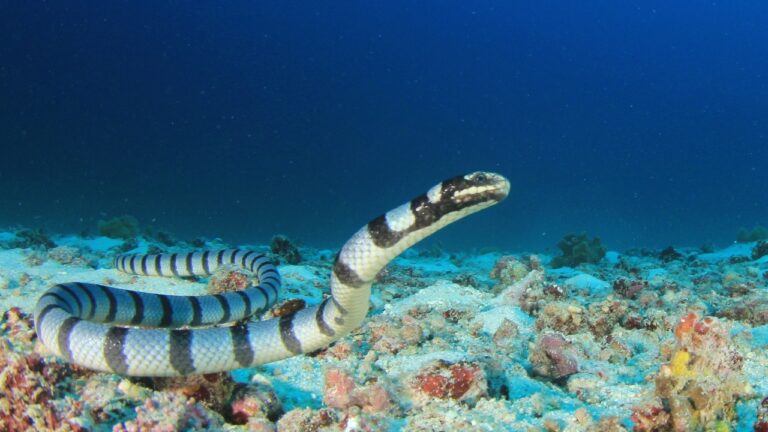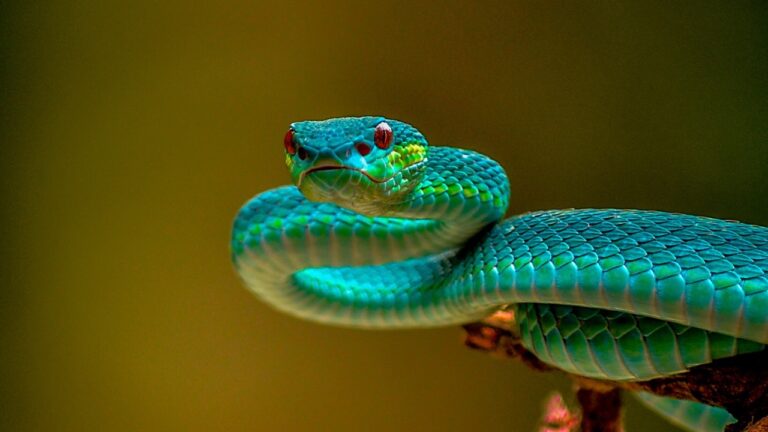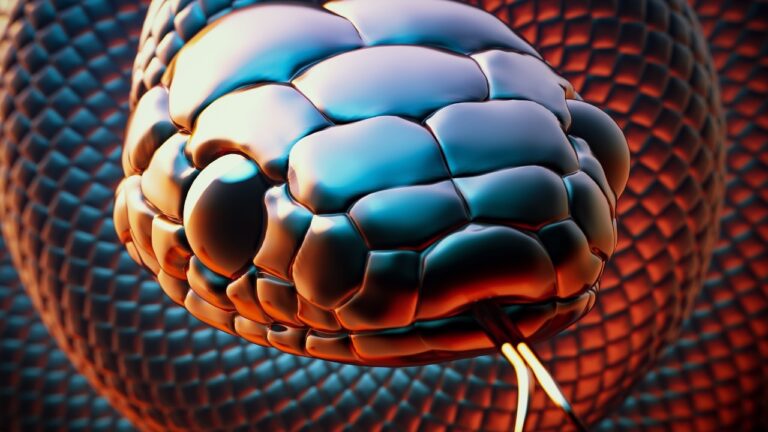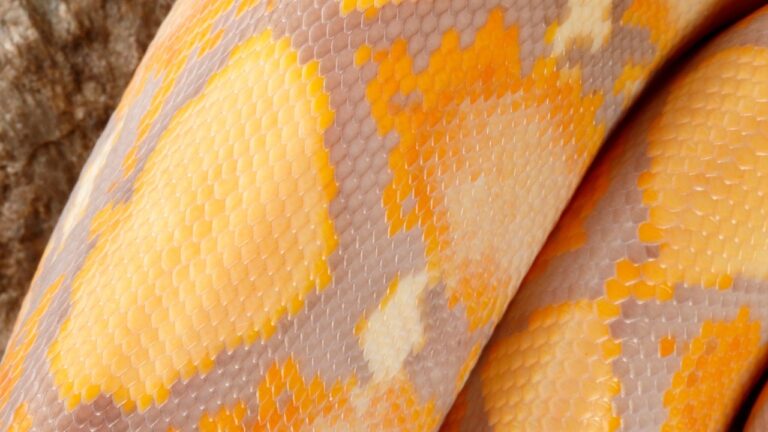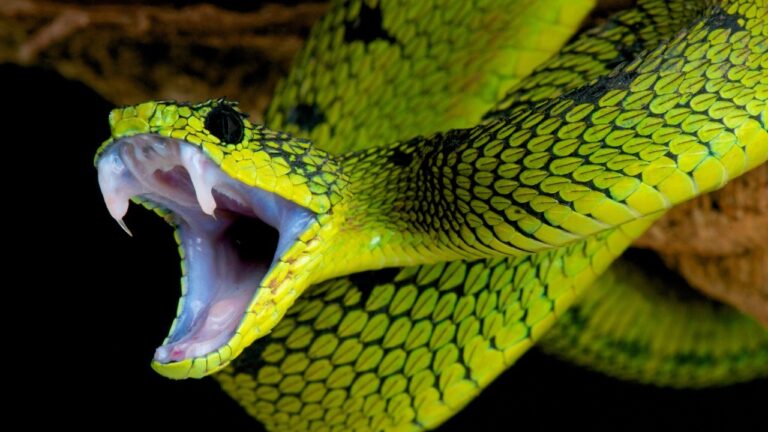Essential Snake Feeding Tips: Expert Advice for Preparing Snake Food
The Importance of Proper Snake Feeding
When it comes to caring for our slithering friends, providing them with a well-balanced and nutritious diet is paramount. Feeding a snake is not just a simple task; it is an art that requires precision, knowledge, and a deep understanding of the snake’s natural diet. By ensuring that our snakes are properly fed, we can contribute to their overall well-being and longevity.
Snakes are fascinating creatures that come in various shapes, sizes, and species. Each snake species has its own unique dietary requirements, and it is crucial to understand these needs in order to provide the appropriate snake food. Whether you are a new snake owner or an experienced reptile enthusiast, having a comprehensive understanding of snake feeding is essential.
In this article, we will delve into the world of snake feeding, exploring different aspects such as selecting the right snake food, preparing it adequately, implementing effective feeding techniques, establishing a feeding schedule, troubleshooting common feeding issues, and ensuring safety precautions. By the end of this article, you will be equipped with the necessary knowledge and expert advice to navigate the intricate world of snake feeding with confidence.
So, let us embark on this journey together, as we unravel the secrets of snake feeding and unlock the door to a healthy and thriving snake companion. But first, let’s delve into the fascinating world of snake diets, understanding the connection between a snake’s natural habitat and its dietary needs.
Understanding Snake Diets
When it comes to understanding snake diets, it’s important to recognize that different snake species have varying dietary preferences. Each snake species has evolved to thrive on specific types of food, and understanding these preferences is crucial to providing optimal nutrition for your scaly companion.
Different snake species and their diets
Snakes exhibit remarkable diversity in their dietary requirements. While some species are strictly carnivorous, feeding exclusively on small mammals, birds, or reptiles, others have a more varied diet that includes amphibians, fish, or even insects. For instance, the corn snake, a popular choice among snake enthusiasts, primarily consumes rodents, while the garter snake has a more diverse palate that includes fish, amphibians, and invertebrates.
It’s essential to research and understand the natural diet of your specific snake species. This knowledge will help you replicate their dietary needs in captivity, ensuring their health and well-being.
Live prey vs. pre-killed prey
When it comes to feeding snakes, one of the key decisions you’ll make is whether to provide live prey or pre-killed prey. Each method has its pros and cons, and it’s important to consider the safety and welfare of both the snake and the prey.
Live prey can replicate the natural hunting experience for snakes, stimulating their predatory instincts and providing mental and physical enrichment. However, it also comes with potential risks. Live prey may injure the snake during the feeding process, especially if the prey is larger or more aggressive than anticipated. Additionally, if the snake fails to capture or consume the live prey, it can lead to stress and wasted energy.
On the other hand, pre-killed prey offers a safer alternative. Pre-killed prey, typically purchased frozen, eliminates the risk of injury to the snake and reduces stress during feeding. It also allows for better control over the size and nutritional content of the prey. However, some snakes may exhibit a reduced interest in pre-killed prey, as the lack of movement may not trigger their hunting instincts.
As a responsible snake owner, you must weigh the benefits and drawbacks of both feeding methods and choose the approach that best suits your snake’s needs. It’s always a good idea to consult with a veterinarian or an experienced reptile keeper for guidance on the most appropriate feeding strategy for your snake.
By understanding the dietary preferences of different snake species and the considerations when choosing between live and pre-killed prey, you can provide the best possible nutrition for your scaly companion. In the next section, we’ll delve into the factors to consider when selecting the right snake food, including appropriate prey size and nutritional requirements.
Continue reading: Choosing the Right Snake Food
Choosing the Right Snake Food
When it comes to ensuring the health and well-being of your scaly companion, choosing the right snake food is of utmost importance. Just like humans, snakes have specific dietary needs that must be met to maintain their overall health and vitality. In this section, we will explore two key factors to consider when selecting snake food: appropriate prey size and nutritional requirements.
Appropriate Prey Size
Snakes come in a wide variety of shapes and sizes, and their prey preferences can vary greatly depending on their species. It is crucial to provide your snake with prey that is an appropriate size to prevent any potential health issues. Feeding your snake prey that is too large can lead to choking or regurgitation, while prey that is too small may not provide the necessary nutritional content.
To determine the right prey size for your snake, it is essential to understand its natural feeding habits and the size of its mouth. Research the specific dietary requirements of your snake species to ensure you are offering prey that matches its needs. It is always better to err on the side of caution and choose prey that is slightly smaller rather than risk overfeeding or causing harm.
Nutritional Requirements
Snakes are carnivorous creatures, and their diet primarily consists of other animals. However, not all prey items are created equal in terms of nutritional content. Providing your snake with a well-balanced diet is crucial for its overall health and longevity.
Different snake species may have varying nutritional requirements, so it is essential to familiarize yourself with the specific needs of your snake. A diet rich in variety will help ensure that your snake receives all the essential nutrients it requires. Consider incorporating different prey items such as mice, rats, birds, or even amphibians to provide a well-rounded diet.
Furthermore, it is worth noting that the nutritional needs of a growing snake may differ from those of an adult snake. Juvenile snakes often require more frequent feeding and specific nutrients to support their rapid growth. As your snake matures, its feeding requirements may change, necessitating adjustments to its diet.
By prioritizing appropriate prey size and understanding the nutritional requirements of your snake, you can provide a balanced and healthy diet that promotes its well-being. Remember, a well-fed snake is a happy snake!
For more information on snake diets and feeding techniques, check out our article on snake diet and feeding snakes. Stay tuned for our upcoming articles on snake food recipes and snake food suppliers for even more tips and resources to keep your slithery friend satisfied!
Preparing Snake Food
When it comes to preparing snake food, there are a few essential steps to ensure that your slithery friend receives a nutritious and safe meal. Whether you are feeding your snake thawed frozen prey or live prey, it is crucial to follow proper guidelines for their well-being.
Thawing Frozen Prey
For those who prefer the convenience and safety of frozen snake food, thawing it correctly is essential. Improper thawing can lead to the loss of vital nutrients and potentially harm your snake. To properly thaw frozen prey, follow these steps:
- Select the appropriate prey size for your snake. It is crucial to match the size of the prey to your snake’s ability to consume it comfortably.
- Place the frozen prey in a sealed plastic bag and submerge it in warm water. Avoid using hot water, as this can cause the prey to cook slightly and compromise its nutritional value.
- Allow the prey to thaw completely. This process may take anywhere from 30 minutes to a few hours, depending on the size of the prey.
- Once the prey is fully thawed, remove it from the water and pat it dry with a paper towel. Excess moisture can make it challenging for your snake to grip and swallow the prey.
Warming Up Live Prey (If Applicable)
For those who opt to feed their snakes live prey, it is crucial to take a few extra precautions to ensure the safety and welfare of both the snake and the prey. Warming up live prey can help stimulate their natural movement, making them more enticing for your snake to strike. Follow these steps to warm up live prey:
- Select the appropriate prey size for your snake. Just like with frozen prey, it is crucial to choose a size that matches your snake’s ability to consume it comfortably.
- Place the live prey in a separate enclosure and provide it with a warm hiding spot, such as a heated rock or a heat pad. This will allow the prey to warm up to an optimal temperature.
- Monitor the live prey for a short period to ensure it is active and healthy. Never feed your snake sick or injured prey, as this can pose a risk to its health.
- Once the live prey has warmed up, safely transfer it to your snake’s enclosure using feeding tongs or other appropriate tools. Always exercise caution when handling live prey to avoid any accidental bites or injuries.
Gut-Loading Prey for Optimal Nutrition
Whether you choose frozen or live prey, gut-loading is a valuable technique to enhance the nutritional content of the food you offer to your snake. Gut-loading involves feeding the prey with highly nutritious foods before offering them to your snake. This practice ensures that your snake receives a well-rounded diet. Here are some tips for gut-loading prey:
- Select nutritious prey for gut-loading purposes. Opt for insects or rodents that have been fed a nutritious diet themselves.
- Provide gut-loaded prey with a variety of fruits and vegetables to enhance their nutritional content. Some commonly used gut-loading foods include leafy greens, carrots, and high-quality commercial insect diets.
- Allow the prey to feed on the nutrient-rich foods for at least 24 to 48 hours before offering them to your snake. This allows the prey to absorb and store essential vitamins and minerals.
- Once the prey has been properly gut-loaded, it is ready to be offered to your snake. Remember to choose the appropriate prey size and follow the recommended feeding techniques.
By following these steps for preparing snake food, you can ensure that your snake receives a nutritious and satisfying meal. Whether you choose to feed frozen or live prey, always prioritize the well-being and specific dietary needs of your slithering companion. For more information on snake diets and feeding techniques, check out our comprehensive guides on snake diet and feeding snakes.
Feeding Techniques
When it comes to feeding your slithery companion, employing the right techniques is crucial to ensure a successful and stress-free mealtime. In this section, we will explore two popular feeding methods: hand-feeding and using feeding tongs, as well as the importance of monitoring feeding behavior.
Hand-feeding
Hand-feeding involves offering the snake its meal directly from your hand. This technique is particularly useful for establishing trust and bonding with your scaly friend. By associating your presence with a positive experience, you can build a strong relationship based on mutual respect.
To hand-feed your snake, first, make sure you are handling the prey appropriately. Whether it’s a thawed frozen rodent or a live creature, ensure that it is at the correct temperature and size for your snake’s consumption. Using disposable gloves is recommended to maintain hygiene during the process.
Gently hold the prey item by its tail and present it to your snake using a slow and controlled motion. Avoid sudden movements or aggressive gestures, as this may startle the snake and cause it to retreat. Allow the snake to strike and secure its food, ensuring it has a firm grip before releasing your hold on the prey.
Remember, each snake has its own personality and feeding preferences. Some may be more hesitant and require patience, while others may eagerly pounce on their meal. Observe your snake’s behavior and adjust your approach accordingly.
Using Feeding Tongs
Feeding tongs, also known as feeding forceps, are a tool designed to offer a safer and more controlled feeding experience. They provide an extra layer of protection for both you and your snake, minimizing the risk of accidental bites or injuries during the feeding process.
To use feeding tongs, grasp the prey item securely with the tongs, ensuring a firm grip. Position the tongs near your snake’s head, allowing it to strike and seize its meal. Maintain a steady grip on the prey until your snake has successfully secured its food. Avoid pulling the prey away forcefully, as this may cause the snake to drop its meal or become agitated.
Feeding tongs are particularly useful when dealing with larger or more aggressive snake species. They provide a safe distance between your hand and the snake’s strike range, reducing the likelihood of accidental contact.
Monitoring Feeding Behavior
Observing your snake’s feeding behavior is crucial to ensure its health and well-being. After your snake has consumed its meal, take note of its behavior and make sure it has successfully swallowed its food. Snakes have a unique ability to stretch their jaws and swallow prey items much larger than their head, but occasionally, they may encounter difficulties.
Look for signs of regurgitation or abnormal behavior, as these can indicate potential digestive issues. If you notice any concerns, consult a reptile veterinarian for guidance. Regular monitoring of your snake’s feeding behavior will enable you to detect and address any problems early on, promoting a healthy and thriving companion.
Remember, feeding techniques may vary depending on the species and individual preferences of your snake. Always prioritize the safety and comfort of both yourself and your scaly friend during feeding sessions. With the right approach and attention to detail, you can ensure a harmonious dining experience for your slithering companion.
Continue reading about snake diets and feeding schedules to further enhance your knowledge of providing the best care for your snake.
Feeding Frequency and Schedule
When it comes to feeding your slithering companion, understanding the frequency and schedule of snake meals is crucial. The dietary needs of snakes can vary based on their age and species, so it’s essential to tailor their feeding routine accordingly.
Frequency based on snake age and species
Snake age and species are two key factors that determine how often you should offer them a meal. For instance, juvenile snakes tend to have a more voracious appetite and require more frequent feedings compared to their adult counterparts. Young snakes typically need to be fed every five to seven days, while adult snakes may only require a meal every seven to fourteen days.
It’s important to note that snake species also play a significant role in determining feeding frequency. Some species, such as corn snakes and ball pythons, have a slower metabolism and can thrive on less frequent meals. On the other hand, highly active species like king snakes and rat snakes may need to be fed more frequently to meet their energy requirements.
Establishing a feeding schedule
To ensure consistency and promote healthy eating habits, it’s advisable to establish a feeding schedule for your snake. This schedule should align with their specific needs based on age and species. By sticking to a routine, you’re not only providing your snake with a predictable mealtime, but you’re also helping to regulate their digestive system.
When creating a feeding schedule, consider the following factors:
-
Size of the meal: Determine the appropriate prey size for your snake, taking into account their girth and length. Offering prey that is too large or too small can lead to feeding difficulties or inadequate nutrition.
-
Digestion time: Allow your snake enough time to fully digest their meal before offering another. Digestion time can vary depending on the size of the prey and the snake’s metabolism. As a general rule, wait at least 48 hours before feeding your snake again.
-
Observing feeding behavior: Pay close attention to your snake’s feeding behavior. If they are consistently finishing their meals without hesitation, it may be an indication that you can increase the meal size or adjust the feeding frequency. Conversely, if your snake shows disinterest or refuses meals, you may need to decrease the prey size or extend the time between feedings.
Establishing a consistent feeding schedule not only promotes the overall well-being of your snake but also allows you to monitor their appetite and health more effectively. Remember that each snake is unique, and it may take some trial and error to find the ideal feeding frequency and schedule for your scaly friend.
For more information on snake diets and feeding techniques, be sure to check out our snake diet and feeding snakes articles.
Troubleshooting Common Feeding Issues
Feeding snakes can sometimes be a complex process, and it’s not uncommon to encounter a few hurdles along the way. In this section, we will delve into some of the most common feeding issues that snake owners may face and provide expert tips on how to troubleshoot them effectively.
Refusal to Eat
One of the most frustrating challenges snake owners may encounter is when their beloved slithering companion refuses to eat. There can be several reasons behind a snake’s refusal to eat, ranging from stress and illness to environmental factors and even seasonal changes. It’s important to address this issue promptly to ensure your snake’s health and well-being.
To encourage a snake that is refusing to eat, there are a few strategies you can try. Firstly, ensure that the snake’s enclosure is suitable, providing a comfortable and secure environment. Maintain appropriate temperature and humidity levels, as fluctuations can disrupt a snake’s appetite. Additionally, minimize disturbances in the snake’s surroundings, as a stressed snake is less likely to eat.
If your snake continues to refuse food, it may be worth exploring alternative prey items. Some snakes have particular preferences when it comes to their diet, and a change in prey type might entice them to eat. Experiment with different options, such as frozen snake food or live snake food, and observe your snake’s response.
Regurgitation
Regurgitation is a distressing issue in which a snake brings back its recently consumed meal. It can occur due to a variety of reasons, including improper handling during feeding, overfeeding, or underlying health problems. Witnessing your snake regurgitate its meal can be alarming, but understanding the causes and implementing corrective measures can help prevent it from happening again.
To address regurgitation, it’s essential to identify the root cause. Evaluate your feeding technique and ensure you are feeding the appropriate prey size. Feeding a snake prey that is too large can put excessive strain on its digestive system, leading to regurgitation. Additionally, avoid handling the snake immediately after feeding, as this can disturb the digestion process.
If you suspect that overfeeding may be the cause of regurgitation, reassess your snake’s feeding schedule. Consult reliable resources, such as reputable snake food suppliers or online guides, to determine the ideal feeding frequency and portion size for your snake’s age and species. Maintaining a balanced diet is crucial for your snake’s overall health.
Overfeeding
While it may be tempting to shower your snake with an abundance of treats, overfeeding can have detrimental effects on its health. Overfeeding occurs when a snake is given more food than it needs, leading to obesity, digestive issues, and an increased risk of other health complications.
To prevent overfeeding, it’s crucial to establish a feeding schedule. Research the specific dietary requirements of your snake species and age group. Consult a reputable snake food supplier or refer to reliable online sources to determine the appropriate frequency and portion size for your snake’s meals.
Remember, a snake’s metabolism varies depending on its age and species. Younger snakes tend to have faster metabolisms and may require more frequent meals, while adult snakes may thrive on a less frequent feeding schedule. Maintaining a balanced and appropriate feeding regimen is key to ensuring the well-being of your scaly friend.
In conclusion, understanding and addressing common feeding issues is essential for the health and happiness of your snake. By troubleshooting refusal to eat, regurgitation, and overfeeding, you can provide the best possible care for your slithering companion. Stay tuned for more expert advice on snake feeding in our upcoming articles.
Safety Precautions
When it comes to feeding snakes, safety should always be a top priority. Handling snakes during feeding requires caution and attention to detail, as it can pose risks to both the snake and the handler. Additionally, proper hygiene and sanitization are essential to maintain a healthy environment for your snake. Let’s delve into the important safety precautions that every snake owner should follow.
Handling snakes during feeding
Handling snakes during feeding should be approached with care and consideration. It is crucial to remember that snakes are instinctual hunters, and they may exhibit defensive behavior during feeding time. To minimize the risk of injury, it is recommended to use feeding tongs or other feeding tools rather than handling the prey with your hands. This not only protects you from potential bites but also prevents the snake from associating your hands with food, reducing the likelihood of accidental bites outside of feeding time.
When using feeding tongs, gently offer the prey to the snake, allowing it to strike and constrict its prey naturally. It is important to maintain a safe distance from the snake’s strike range to avoid any accidental bites. Never force the prey onto the snake or attempt to hand-feed it while holding the prey with your bare hands.
Proper hygiene and sanitization
Maintaining proper hygiene and sanitization is essential for the overall health and well-being of your snake. Before and after handling any snake or their food, it is crucial to wash your hands thoroughly with soap and warm water. This helps prevent the transfer of any potential bacteria or pathogens between you and your snake.
Furthermore, it is essential to regularly clean and disinfect the snake’s enclosure and feeding equipment. This includes removing any uneaten prey from the enclosure promptly and sanitizing the feeding tongs or tools after each use. By doing so, you minimize the risk of bacterial growth and potential infections for your snake.
Remember, safety and hygiene go hand in hand when it comes to feeding snakes. By taking the necessary precautions and following proper sanitization practices, you create a safe and healthy environment for both you and your snake.
Stay tuned for our next article, where we will explore the importance of a snake feeding schedule and how to establish one for your snake’s specific needs.
Internal links: snake feeding schedule, feeding snakes
Conclusion
In conclusion, providing the proper diet for your snake is essential for its overall health and well-being. By understanding the specific dietary needs of different snake species and following the appropriate feeding techniques, you can ensure that your snake receives the necessary nutrition it requires to thrive.
When choosing snake food, it is important to consider the size of the prey and the nutritional requirements of your snake. Appropriate prey size is crucial to prevent choking or digestive issues, while nutritional requirements vary depending on the species. Researching the specific needs of your snake will help you make informed decisions when selecting the right food.
Preparing snake food involves thawing frozen prey or warming up live prey if applicable. Thawing frozen prey should be done carefully to prevent the growth of harmful bacteria. On the other hand, warming up live prey can help stimulate the snake’s hunting instincts. Additionally, gut-loading prey with nutritious food before feeding can optimize the nutritional value for your snake.
Feeding techniques such as hand-feeding or using feeding tongs allow for safe and controlled feeding interactions with your snake. Monitoring your snake’s feeding behavior can help you identify any potential issues or irregularities.
Establishing a feeding frequency and schedule is crucial to maintain a healthy feeding routine for your snake. Factors such as age and species play a role in determining how often your snake should be fed. Creating a consistent schedule ensures that your snake receives regular meals and helps prevent overfeeding or underfeeding.
It is important to be aware of and troubleshoot common feeding issues such as refusal to eat, regurgitation, and overfeeding. These problems can arise for various reasons, and addressing them promptly is crucial for your snake’s health.
Lastly, practicing safety precautions during snake feeding is paramount. Handling snakes during feeding should be done with care and expertise to minimize the risk of injury. Additionally, maintaining proper hygiene and sanitization prevents the spread of bacteria or parasites.
Remember, if you have any doubts or concerns about feeding your snake, consult a veterinarian or reptile specialist for guidance. They can provide expert advice tailored to your snake’s specific needs.
Thank you for reading this comprehensive guide on snake feeding. We hope that the information provided has been valuable and will assist you in providing the best possible care for your scaly companion. For further resources on snake diet, feeding schedule, and snake food suppliers, feel free to explore our website.
Happy feeding and may your snake thrive with a well-balanced diet!


